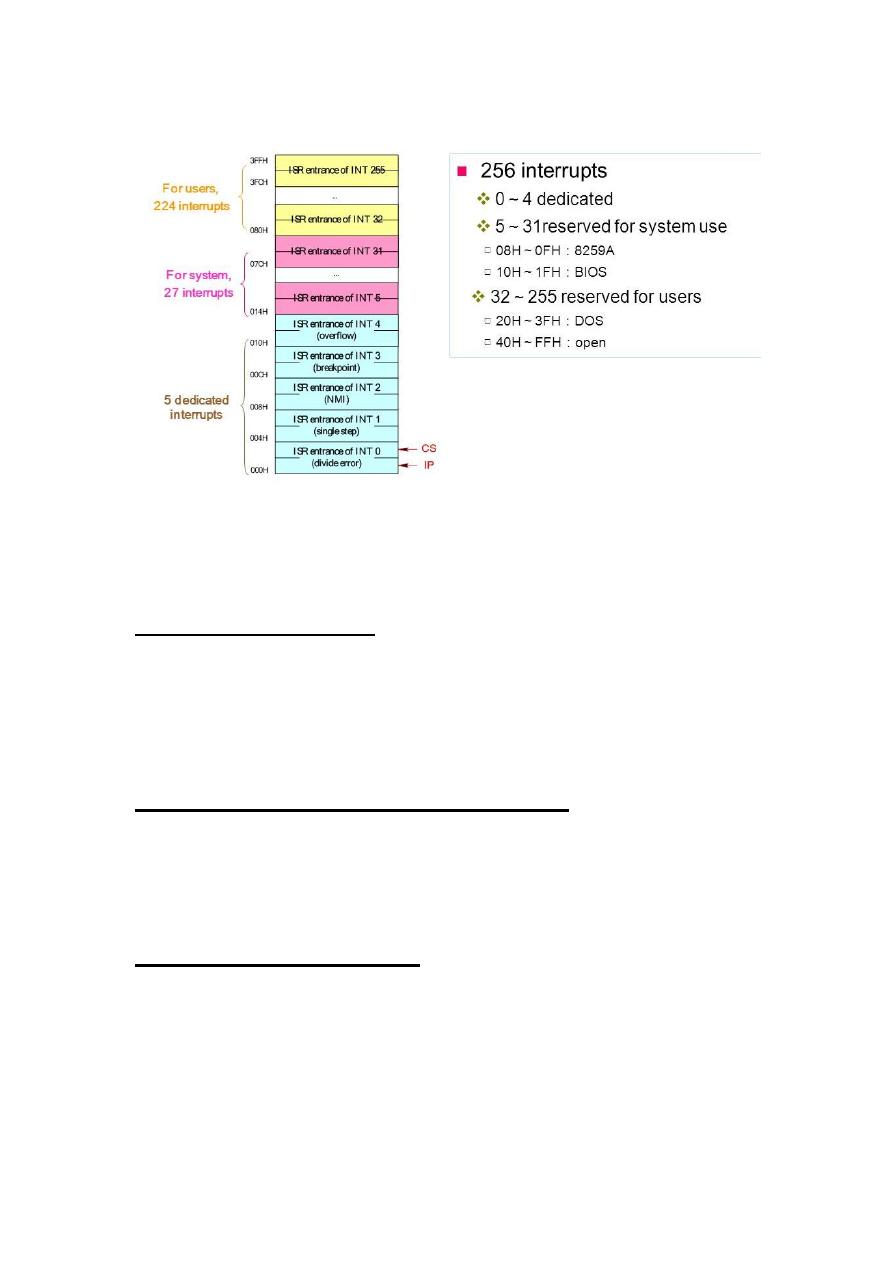
8086 interrupt
An interrupt is the method of processing the microprocessor by peripheral
device. An interrupt is used to cause a temporary halt in the execution of program.
Microprocessor responds to the interrupt with an interrupt service routine, which is
short program or subroutine that instructs the microprocessor on how to handle the
interrupt.
There are two basic type of interrupt, maskable and non-maskable, non-
maskable interrupt requires an immediate response by microprocessor, it usually used
for serious circumstances like power failure. A maskable interrupt is an interrupt that
the microprocessor can ignore depending upon some predetermined condition defined
by status register.
Hardware,software and internal interrupt are service on priority basis. each
interrupt is given a different priority level by assign it a type number. Type 0
identifies the highest-priority and type 255 identifies the lowest- priority interrupt.
The 8086 chips allow up to 256 vectored interrupts. This means that you can
have up to 256 different sources for an interrupt and the 8086 will directly call the
service routine for that interrupt without any software processing.
When an interrupt occurs regardless of source, the 8086 does the following:
1. The CPU pushes the flags register onto the stack.
2. The CPU pushes a far return address (segment:offset) onto the stack, segment value
first.
3. The CPU determines the cause of the interrupt (i.e., the interrupt number) and
fetches the four byte interrupt vector from address 0:vector*4.
4. The CPU transfers control to the routine specified by the interrupt vector table
entry.
When the interrupt service routine wants to return control, it must execute an
IRET (interrupt return) instruction. The interrupt return pops the far return address
and the flags off the stack. Note that executing a far return is insufficient since that
would leave the flags on the stack.
Interrupt Vector Table - IVT
•
8086 Recognizes 256 Different Interrupts Specified by Type Number or Vector
• 1 Byte of Data Must Accompany Each Interrupt Specifies Type Vector is Pointer
into Interrupt Vector Table, IVT
– Stored in Memory from 0000:0000 to 0000:03ffh
• IVT Contains 256 Far Pointer Values
– Far Pointer is CS:IP Values
• Each Far Pointer is Address of Interrupt Service Routine, ISR
– Also Referred to as Interrupt Handler.

Interrupt Vector Table - IVT
hardware interrupt
The primary sources of interrupts, however, are the PCs timer chip, keyboard,
serial ports, parallel ports, disk drives, CMOS real-time clock,
mouse, sound cards, and other peripheral devices. These devices connect to an Intel
8259A programmable interrupt controller (PIC) that prioritizes the interrupts and
interfaces with the 8086 CPU.
NON-MASKABLE INTERRUPT (NMI)
The processor provides a single non-maskable interrupt pin (NMI) which has
higher priority than the maskable interrupt request pin (INTR). The NMI is edge-
triggered on a LOW-to-HIGH transition. The activation of this pin causes a type 2
interrupt.
MASKABLE INTERRUPT
Whenever an external signal activates the INTR pin, the microprocessor will
be interrupted only if interrupts are enabled using set interrupt Flag instruction. If the
interrupts are disabled using clear interrupt Flag instruction, the microprocessor will
not get interrupted even if INTR is activated. That is, INTR can be masked.
